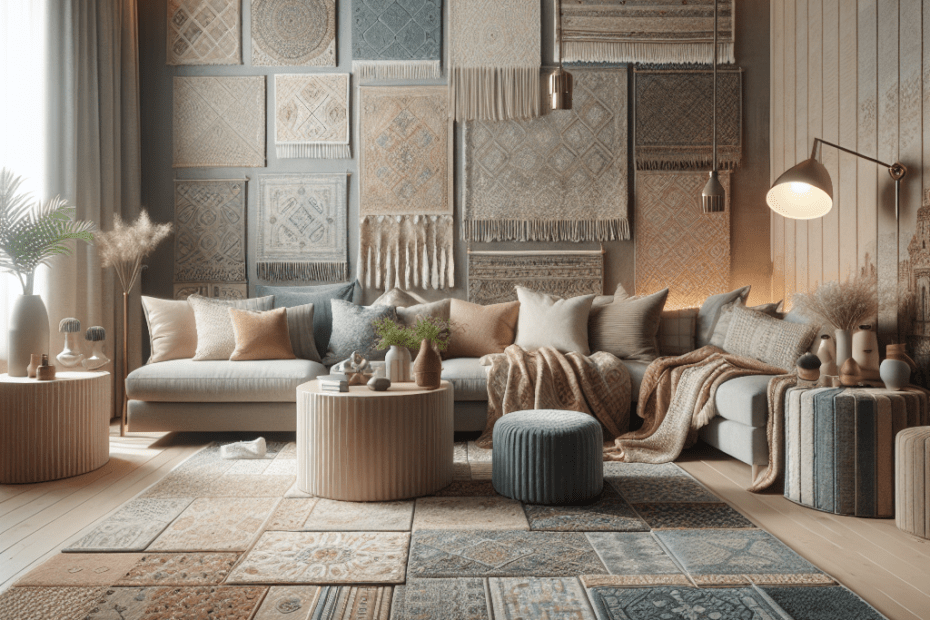“`html
The Art of Layering Rugs in Interior Design
Layering rugs in interior design has emerged as a popular trend that not only adds warmth to a room but also brings depth, texture, and visual interest. Realizing the potential of using multiple rugs in a single room can transform a space into a cozy and inviting haven. With more than 24% of interior designers incorporating this practice in their projects, according to Statista, it’s clear that layering rugs is becoming a mainstay in modern decor.
What is Layering Rugs?
Layering rugs involves placing two or more rugs atop one another in a coordinated fashion. This can enhance any room’s design by introducing multiple patterns, colors, and textures into the space. Layering allows for flexibility and creativity, giving designers and homeowners the freedom to experiment with different styles without committing permanently to one.
Benefits of Layering Rugs
Beyond aesthetic appeal, layering rugs offers numerous practical benefits. They can delineate spaces in open floor plans, add dimensionality to flat or dull rooms, and provide extra comfort underfoot. Moreover, by using smaller rugs over a larger neutral base, one can protect more expensive floor coverings from wear and tear, extending their lifespan.
Layering Techniques and Design Tips
- Contrast and Complement: Use rugs with contrasting patterns to create dynamic visuals or choose complementary colors for coherence.
- Texture Matters: Mix various textures, like a soft wool rug over a natural jute or sisal rug, to add a tactile experience.
- Size Proportions: Ensure the bottom rug is larger, allowing the top rug to act as a focal point.
- Avoid Overcrowding: Avoid layering too many small rugs as they may create a cluttered look.
- Consider Functionality: In high traffic areas, choosing durable materials for the base layer can prevent frequent wear.
Layering Rugs: A Creative Expression
Interior designers often view layering rugs as an art form because it provides a unique way to express personal style. This practice allows for endless combinations and configurations, ensuring no two layered rug designs are the same. Whether pairing an antique Persian rug with a modern geometric style or mixing bold stripes with classic florals, the goal is to create a harmonious design that is both functional and stylish.
An increasing number of homeowners are adopting this trend to redefine their spaces without extensive renovations. With 34% of surveyed homeowners recognizing this as a method to refresh their interiors, according to HomeAdvisor, it’s no surprise that the popularity of rug layering continues to grow.
Case Studies: Successful Layering Rug Implementations
| Case Study | Description | Outcome |
|---|---|---|
| Modern Bohemian Apartment | Utilized vibrant rugs with tribal patterns over a neutral base rug. | Created an inviting and eclectic living area. |
| Rustic Country House | Layered natural fiber rugs with soft, printed wool rugs in the study room. | Achieved a seamless blend of rustic coziness with modern comfort. |
| Urban Studio Loft | Mixed contemporary and vintage rugs to differentiate zones. | Defined spaces in an open floor plan while maintaining a cohesive style. |
Key Takeaways
- Layering rugs adds texture, warmth, and character to a room.
- Effective layering involves balance in pattern, color, and texture.
- Practical benefits include space definition and floor protection.
- Experimentation with different styles offers endless design possibilities.
- Common in contemporary interior design with increasing popularity among homeowners.
FAQ
Q1: What types of rugs are best for layering?
A1: Natural fiber rugs like jute, sisal, or cotton make excellent base layers, while more colorful or patterned wool or silk rugs can be used on top for accent.
Q2: How many rugs should be layered in one area?
A2: Generally, two to three rugs are sufficient for most spaces. More than this can create a messy and cluttered appearance.
Q3: Can layering rugs be done on carpeted floors?
A3: Yes, layering rugs is possible on carpeted floors, although it works best with low-pile carpeting.
Q4: How can they use rug layering to define spaces?
A4: By strategically placing rugs, they can visually separate different functional areas within a larger room or open plan space.
Q5: Is it expensive to layer rugs?
A5: This practice can be tailored to any budget, as it allows for the use of smaller, less expensive rugs on top of larger, more affordable base rugs.
“`
